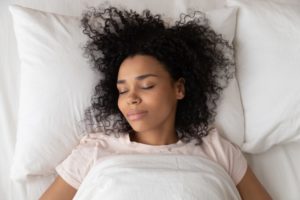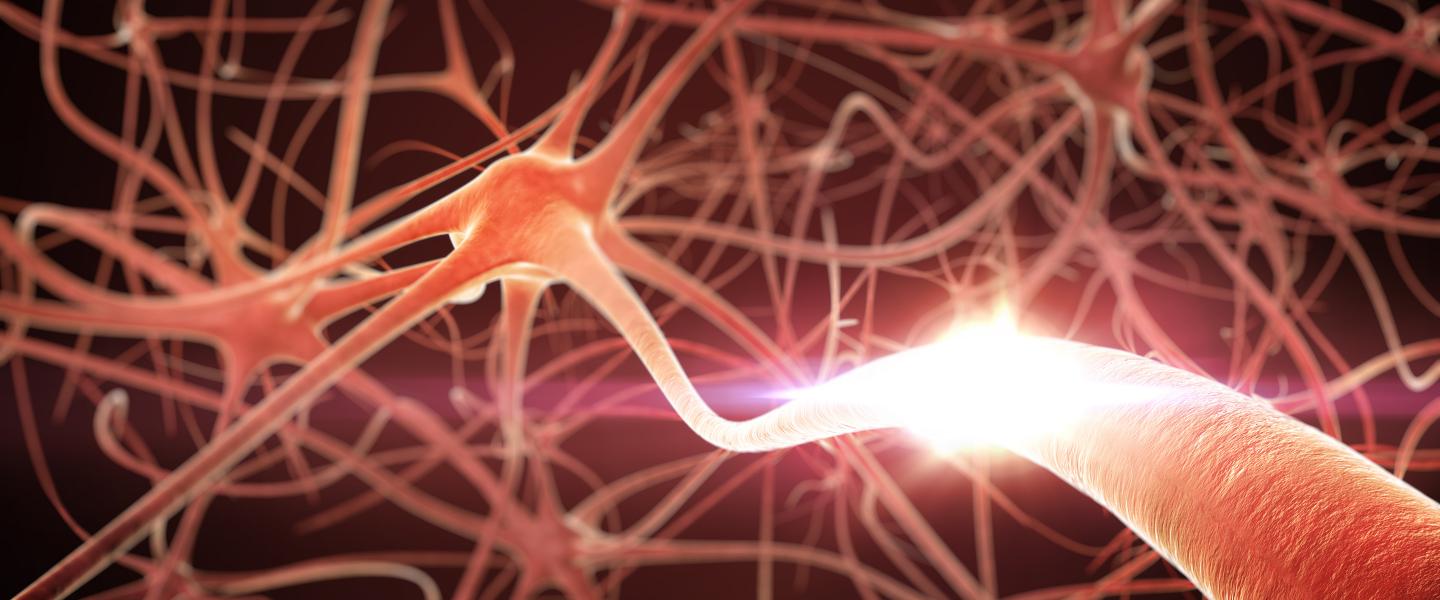What’s the Connection Between Race and Sleep Disorders?
Few time periods have called so much attention so quickly to the issue of racial inequality in the United States as the spring of 2020. The horrific killing of George Floyd caused millions of people to confront the dramatic differences between the lived experiences of white people and people of color in America.
The heightened awareness of police brutality has arisen at the same time as the coronavirus pandemic, which has had a disproportionate impact on people of color in America. This sad reality is a sobering reminder that the tendency to focus on public health data in the aggregate can obscure how the burdens of health problems are not equally distributed across society.
People in disadvantaged groups of a certain race, ethnicity, gender, sexual orientation, and/or socioeconomic status frequently suffer from a greater share of health issues. The disparate impacts among these groups are known as health disparities .
A growing body of evidence points to sleeping problems as an area of significant health disparities between racial and ethnic groups. Because of sleep’s critical role in overall wellness, sleep insufficiency may help explain other health disparities, such as the higher rates of cardiovascular disease among people of color.
Racial and ethnic disparities are a developing field in sleep research with much still to be learned about this important topic. This guide provides an introduction to the current research about the extent, causes, and implications of the unequal burdens of sleeping problems in America.
Discussing Race and Ethnicity in Public Health
Experts across the physical and social sciences acknowledge that defining race and ethnicity is complicated. Despite historical claims to the contrary, these are not categories that can be defined biologically . Most contemporary theories hold that race and ethnicity are socially constructed and must be understood within a broader cultural context.
Nevertheless, as noted by Dr. Eliseo J. Pérez-Stable, the Director of the National Institute on Minority Health and Health Disparities (NIMHD), “the effects of these social constructs are real” and can be identified in a range of health outcomes.
To better identify health disparities, researchers often employ broad categories of race and ethnicity, such as those found in the U.S. Census . Although these categories are imperfect and can represent groups as far more homogenous than they really are, they have served as a starting point for examining the differences in sleep and other health problems.
An important component of future research in this field is the concept of intersectionality , which recognizes that impacts of inequality can be distinct for people not just based on their race or ethnicity but also their gender, sexual orientation, age, socioeconomic status, and other factors. A multifaceted view of health disparities enables a clearer understanding of these problems and their potential solutions.
How Is Sleep Different Among Racial and Ethnic Groups?
When looking at top-line data, it’s clear that sleeping problems are a major concern in the United States. It’s estimated that around 30% of adults suffer from insomnia, and an even higher percentage experience occasional short sleep of less than 7 hours per night.
Researchers who have started to dig deeper into this big-picture data, though, have found that, although sleeping problems can affect people of all races, there are strong indications that they have a disproportionate impact on racial and ethnic minorities.
Sleeping Problems in Racial and Ethnic Minority Groups
Getting precise information about how much people sleep is complicated. Even though it’s not perfectly accurate, a great deal of data comes from self-reported levels of sleep quantity and quality.
A number of health survey studies have found higher rates of short sleep among black people than other groups. Sleep apnea, a breathing disorder with potentially serious health consequences, was found to be noticeably more common and more severe in black people and particularly for black young adults.
Studies have also found higher rates of long sleep, defined as greater than 9 hours per night, among the black population. Like short sleep, long sleep can be problematic and has been associated with higher overall mortality rates .
Higher rates of sleeping problems have also been found among Hispanic and Latino people . As was found with black people compared to whites, Hispanic and Latino people generally report an increased prevalence of low-quality sleep, short sleep, and long sleep.
There is also evidence that there is a higher burden of sleeping problems on Native Americans and Alaska Natives, Asians, and Hawaiian and Pacific Islanders. To date, though, the extent of research in these groups is more limited, complicating the ability to draw clear conclusions about sleep disorders among them.
What Are Potential Causes of Health Disparities in Sleep?
Because of the wide range of factors that can influence sleep, it’s difficult to know with certainty what causes the differences in sleep among racial and ethnic groups in the United States. However, the disparities in sleep are generally not found when people sleep in controlled environments (like sleep labs), which points to a strong influence from social, economic, and cultural factors.
Researchers studying health disparities point to a number of potential causes of the higher rates of sleeping problems for people of color. A common theme among many of these factors is higher levels of both physical and emotional stress.
Stress induces changes in multiple systems of the body and puts a person in an “on alert” state, known as hyperarousal , that has been found to be a central driver of insomnia.
Examples of potential contributors to sleep-related health disparities cited by those who have studied the issue include:
- Shift Work: People of color are more likely to work night shifts or irregular or extra hours that can throw off their sleep schedule and their ability to sync their circadian rhythm with the local day-night cycle.
- Occupational Hazards: Many people of color report job stress from discrimination in the workplace. In addition, it’s more common for people of color to work in jobs with greater safety risks that can create stress or occupational exposures to allergens or irritants that may increase their susceptibility to sleep apnea.
- Racial Discrimination: The issue of police brutality illustrates only one aspect of racial discrimination that can have far-reaching effects on a person’s health. Fear, anger, and sadness related to racial discrimination are a major stressor for many people of color, and studies have uncovered an association between perceived discrimination and lack of sleep.
- Financial Stress: A higher percentage of people of color face unemployment and poverty, both of which can create financial pressure and significant day-to-day stress.
- Neighborhood Environment: Neighborhoods with a higher percentage of people of color often confront higher levels of pollution, noise, allergens, and other potential stressors and contributors to poor sleep and sleep apnea.
- Acculturation: For ethnic groups, especially those made up of significant immigrant communities, the process of adjusting to dominant culture in America can be a source of tremendous stress and anxiety that may influence sleep quality.
- Unequal Access to and Quality of Medical Care: Disparities in access to care have a broad effect on health outcomes for people of color. For example, conditions like sleep apnea may be less likely to be diagnosed or effectively treated, or people may be less likely to discuss sleeping problems with a doctor.
Many of these factors contribute to other health problems that occur with greater frequency in people of color, such as a greater risk of obesity and diabetes. These conditions may have a bidirectional link with sleeping problems and create greater health risks in people of color.

Why Do Racial and Ethnic Sleep Disparities Matter?
Sleep is critical to virtually every aspect of health and wellness. It promotes physical health and recovery with direct effects on almost all systems of the body. Sleep is vital for cognitive function, attention, and memory. Sleep also plays an integral role in emotional health.
Experts studying health disparities have identified poor sleep as a potential factor that can help explain unequal health outcomes in minority communities. For instance, higher rates of sleep apnea among people of color may directly influence their rates of cardiovascular disease.
Understanding the ways that sleeping problems affect people of color can empower public health officials to design better programs to address sleep and other health disparities that may be related to it. Because there are often clear steps that can be taken to improve sleep, it may be an effective focus for strategies to reduce inequalities in the health system.
What Are Next Steps for Addressing Sleep-Related Health Disparities?
Resolving health inequalities requires an ambitious program to learn more about their prevalence, causes, and impacts so that a tailored strategy can be developed to address them.
For sleep-related health disparities, it is essential to gather not only more data but higher-quality data as well. More robust information would have an intersectional approach and reflect potential problems in data collection, such as the fact that many people inaccurately report their sleep, and the degree of inaccuracy may vary among racial and ethnic groups.
Better data about the extent of the problem is necessary but not sufficient. Many accepted treatments for insomnia are based on research studies that included few people of color. Approaches like cognitive behavioral therapy for insomnia (CBT-I) or education about sleep hygiene may need to be tailored to improve their efficacy for racial and ethnic minority patients. Only well-designed research studies can clarify the optimal treatments for these patients by broadening their scope to involve more diverse and representative participants. If successful, interventions to improve sleep may have a wider positive effect, including cardiovascular health.
Redoubled efforts regarding broader issues like access to health care, police brutality, environmental justice, racial discrimination, and employment and economic opportunity, will also play a central part in addressing the underlying factors that drive differences in sleep among racial and ethnic groups.

Still have questions? Ask our community!
Join our Sleep Care Community — a trusted hub of product specialists, sleep health professionals, and people just like you. Whether you’re searching for the perfect mattress or need expert sleep advice, we’ve got you covered. Get personalized guidance from the experts who know sleep best.
References
15 Sources
-
Pérez-Stable, E. J. (2020, May 26). Spotlight on COVID-19 and Health Disparities: Opportunities to Achieve Better Understanding and Equality for Vulnerable Populations., Retrieved June 16, 2020, from
https://nimhd.blogs.govdelivery.com/2020/05/26/spotlight-on-covid-19-and-health-disparities-opportunities-to-achieve-better-understanding-and-equality-for-vulnerable-populations/ -
MedlinePlus [Internet]. Bethesda (MD): National Library of Medicine (US); Heart attack;
https://medlineplus.gov/healthdisparities.html -
Egan, K. J., Knutson, K. L., Pereira, A. C., & von Schantz, M. (2017). The role of race and ethnicity in sleep, circadian rhythms and cardiovascular health. Sleep medicine reviews, 33, 70–78.
https://pubmed.ncbi.nlm.nih.gov/27908540/ -
National Center for Chronic Disease Prevention and Health Promotion. (2017, July 3). African American Health., Retrieved June 16, 2020, from
https://www.cdc.gov/vitalsigns/aahealth/index.html -
Chou, V., & Utter, D. (2019, February 27). How Science and Genetics are Reshaping the Race Debate of the 21st Century., Retrieved July 30, 2020, from
http://sitn.hms.harvard.edu/flash/2017/science-genetics-reshaping-race-debate-21st-century/ -
James, M., and Burgos, A. Race. The Stanford Encyclopedia of Philosophy (Summer 2020 Edition), Edward N. Zalta (ed.)., Retrieved June 16, 2020, from
https://plato.stanford.edu/archives/sum2020/entries/race/. -
Pérez-Stable, E. J. (2020, June 12). Racism and the Health of Every American., Retrieved June 16, 2020, from
https://nimhd.blogs.govdelivery.com/2020/06/12/racism-and-the-health-of-every-american/#more-1486 -
Brown, A. (2020, February 25). The changing categories the U.S. census has used to measure race., Retrieved June 16, 2020, from
https://www.pewresearch.org/fact-tank/2020/02/25/the-changing-categories-the-u-s-has-used-to-measure-race/ -
Mays, V. M., Ponce, N. A., Washington, D. L., & Cochran, S. D. (2003). Classification of race and ethnicity: implications for public health. Annual review of public health, 24, 83–110.
https://pubmed.ncbi.nlm.nih.gov/12668755/ -
Johnson, D. A., Jackson, C. L., Williams, N. J., & Alcántara, C. (2019). Are sleep patterns influenced by race/ethnicity – a marker of relative advantage or disadvantage? Evidence to date. Nature and science of sleep, 11, 79–95.
https://pubmed.ncbi.nlm.nih.gov/31440109/ -
National Center for Chronic Disease Prevention and Health Promotion, Division of Population Health. (2018, August 8). CDC – Sleep and Chronic Disease – Sleep and Sleep Disorders. Centers for Disease Control and Prevention., Retrieved June 16, 2020, from
https://www.cdc.gov/sleep/about_sleep/chronic_disease.html -
Kingsbury, J. H., Buxton, O. M., & Emmons, K. M. (2013). Sleep and its Relationship to Racial and Ethnic Disparities in Cardiovascular Disease. Current cardiovascular risk reports, 7(5), 10.1007/s12170-013-0330-0.
https://pubmed.ncbi.nlm.nih.gov/24244756/ -
Cappuccio, F. P., D’Elia, L., Strazzullo, P., & Miller, M. A. (2010). Sleep duration and all-cause mortality: a systematic review and meta-analysis of prospective studies. Sleep, 33(5), 585–592.
https://www.ncbi.nlm.nih.gov/pubmed/20469800 -
Jackson, C. L., Redline, S., & Emmons, K. M. (2015). Sleep as a potential fundamental contributor to disparities in cardiovascular health. Annual review of public health, 36, 417–440.
https://pubmed.ncbi.nlm.nih.gov/25785893/ -
Roth T. (2007). Insomnia: definition, prevalence, etiology, and consequences. Journal of clinical sleep medicine : JCSM : official publication of the American Academy of Sleep Medicine, 3(5 Suppl), S7–S10.
https://pubmed.ncbi.nlm.nih.gov/17824495/















































